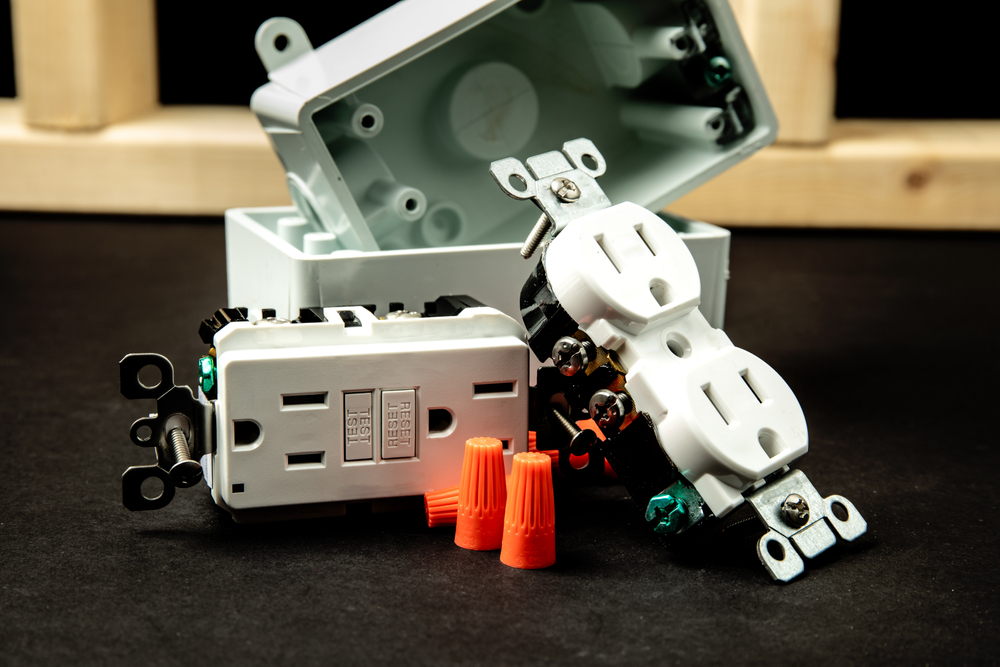Facilities professionals involved with the new construction and renovation of commercial, industrial, educational, and governmental properties should be familiar with ground-fault circuit interrupters (GFCIs) and their importance. Understanding and using GFCIs can help protect against electrocution and reduce the chances of fires, overheating, and destruction of wire insulation.

What Are GFCIs?
According to the National Fire Protection Agency (NFPA), GFCIs are designed to protect people from hazardous ground faults, which can occur when plugging in defective appliances or corded equipment. The Occupational Safety and Health Administration (OSHA) warns that a lack of protection from ground faults can potentially result in serious injuries or death.
How Do GFCIs Work?
According to OSHA, GFCIs are fast-acting circuit breakers that will shut off power in as little as 1/40th of a second.
“It works by comparing the amount of current going to and returning from equipment along the circuit conductors. When the amount going differs from the amount returning by approximately 5 milliamperes, the GFCI interrupts the current,” OSHA says.
A milliampere is 1/1,000 of an ampere, which is how the flow of current through a conductor is measured.
Types of GFCIs
Facilities professionals should decide which type of GFCI to install. If in doubt, contact a licensed electrician.
Receptacle: While similar in appearance to common wall outlets, also known as standard duplex receptacles, GFCI receptacles have “reset” and “test” buttons on them and are the GFCI type most people are familiar with. They can fit into standard outlet boxes or replace older ungrounded, two-slot receptacles, according to the U.S. Consumer Product Safety Commission (CPSC). This type of GFCI is becoming more popular because of its low cost. Safe Electricity.org recommends testing it monthly by pressing the test button to turn the power off to the circuit and pressing the reset button to reestablish power and protection.
Circuit Breaker: Many circuit breaker GFCIs are used as replacements for standard circuit breakers and provide GFCI protection to all receptacles on that individual circuit. The circuit breaker can be installed in a panel box to add protection to the circuits it supplies. The CPSC website states that a circuit breaker “can protect against both a ground fault and a circuit overload” and that it “protects the wiring and every outlet, lighting fixture, or appliance on the branch circuit that it supplies.” To test it, press the test button, which should cause the handle to move to the tripped position.
Temporary or Portable: These are frequently used in construction and outdoors with items like electric tools, mowers, trimmers, and similar devices. They’re designed for easy transport and come in several styles. One type contains GFCI circuitry in a plastic enclosure, with plug blades in the back and receptacle slots in the front, while another type is an extension cord with a GFCI and uses receptacles that aren’t protected by GFCIs. Portable GFCIs have a no-voltage release device that will disconnect power to outlets if any supply conductor is open. While these are used where GFCIs aren’t practical, they shouldn’t be used as a permanent alternative to a regular GFCI.
Cord-Connected: This is an attachment plug containing the GFCI module protecting the cord and any equipment attached to the cord. It has a nonstandard appearance, with test and reset buttons just like a receptacle GFCI. However, according to OSHA, “like the portable GFCI, it has a no-voltage release device that will disconnect power to the load if any supply conductor is open.” When using this type, the power cord must be pressed completely into the wall outlet and the power tools it’s used with. If the prongs are loose in the outlet, it might not sense the current and will be unable to transmit electricity.
What Does the Law Say?
GFCIs have been required by the National Electric Code (NEC), a series published by the NFPA, since 1975. This typically only applies to new construction and major renovations, but coverage of this protection has increased over the years.
Facilities professionals must include GFCI protection in 125-volt single-phase circuits or power circuits going to this equipment in or near the following areas:
- Kitchens
- Outdoor public areas
- Wet sinks
- Swimming pools
- Hot tubs
- Elevator pits
- Machinery rooms
- Hospital critical care
- Electrical life support equipment areas
- Snow-melting equipment
- Roof-mounted solar photovoltaic systems
Also, consider GFCI protection for:
- Electronically powered garden equipment
- Electrical portable tools
Learn More
For more general information on electrical safety that can be helpful when using GFCIs, please read “Back to Basics: Electrical Safety” on EHS Daily Advisor.
